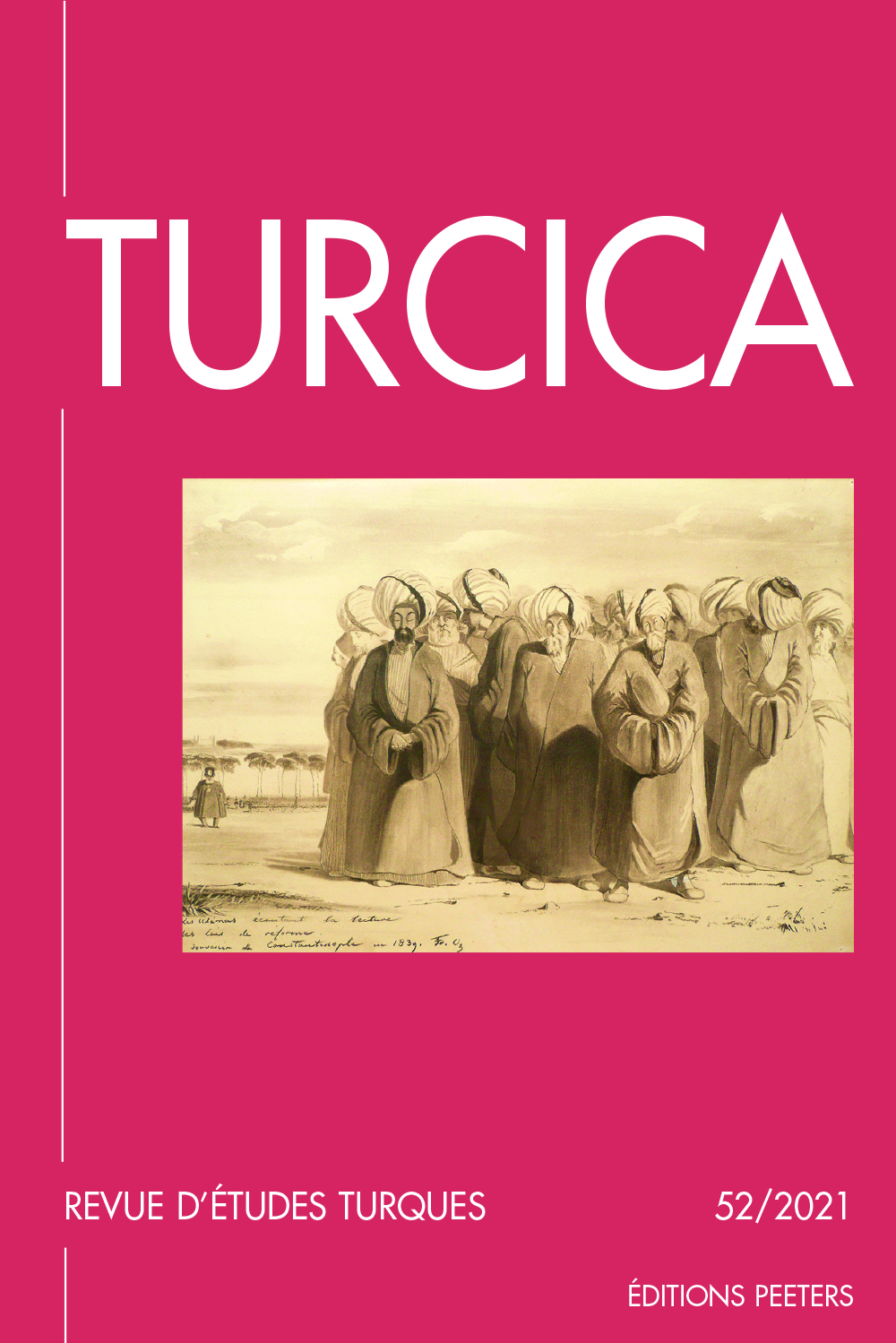 previous article in this issue previous article in this issue | next article in this issue  |

|
Document Details : Title: Le champ de la typographie ottomane Subtitle: Pratiques et conceptions à travers la trajectoire de Şemseddin Sami (1850-1904) Author(s): CLAYER, Nathalie Journal: Turcica Volume: 52 Date: 2021 Pages: 339-371 DOI: 10.2143/TURC.52.0.3289813 Abstract : Dans cet article, il s’agit de cerner certaines dynamiques du champ typographique ottoman dans les trois dernières décennies du XIXe siècle à travers la trajectoire d’un intellectuel polyvalent, originaire des provinces balkaniques, plongé dans le milieu journalistique stambouliote à partir du début des années 1870: Şemseddin Sami (1850-1904). Son immersion physique dans des imprimeries de la capitale ottomane, où il côtoie ou hérite d’autres intellectuels polyvalents, entraîne chez lui un intérêt, non seulement pour la langue et la diffusion des savoirs, mais aussi pour l’imprimé dans sa matérialité sous tous ces aspects: coût, format, présentation, et donc aussi typographie. Même éloigné des imprimeries et du champ journalistique à partir du début des années 1880 pour des raisons politiques, il n’en demeure pas moins actif dans le champ typographique. Il en établit et/ou diffuse des règles en s’attaquant à la question de la ponctuation et de la composition. Il invente un nouveau système permettant de réduire encore le nombre de caractères pour imprimer les langues écrites en caractères arabes comme le turc-ottoman. Il tente de convaincre d’un côté le public de la nécessité d’utiliser un tel système et de l’autre un fabriquant de machines à écrire de la possibilité d’en faire un usage commercial. Si ce projet ne voit pas le jour, c’est en raison de sa position marginale tant dans le champ politique ottoman que dans le champ typographique transnational. In this article, the aim is to identify some of the dynamics of the Ottoman typographical field in the last three decades of the nineteenth century through the trajectory of a multiskilled intellectual, from the Balkan provinces, immersed in the Istanbul journalistic milieu from the early 1870s onwards: Şemseddin Sami (1850-1904). His physical immersion in printing houses in the Ottoman capital, where he rubs shoulders or inherits other versatile intellectuals, leads him to an interest, not only in the language and the diffusion of knowledge, but also in the materiality of printing matter in all its aspects: cost, format, presentation, and therefore also typography. Even though he was not anymore active in printing houses and journalism from the early 1880s for political reasons, he remained active in the field of typography. He established and/or disseminated rules by addressing the issue of punctuation and composition. He invented a new system to further reduce the number of characters to print languages written in Arabic characters such as Ottoman-Turkish. He tried to convince on the one hand the public of the need to use such a system and on the other hand a typewriter manufacturer of the possibility of making commercial use of it. This project did not see the light of day because of his marginal position in both the Ottoman political field and the transnational typographical field. |
 |
